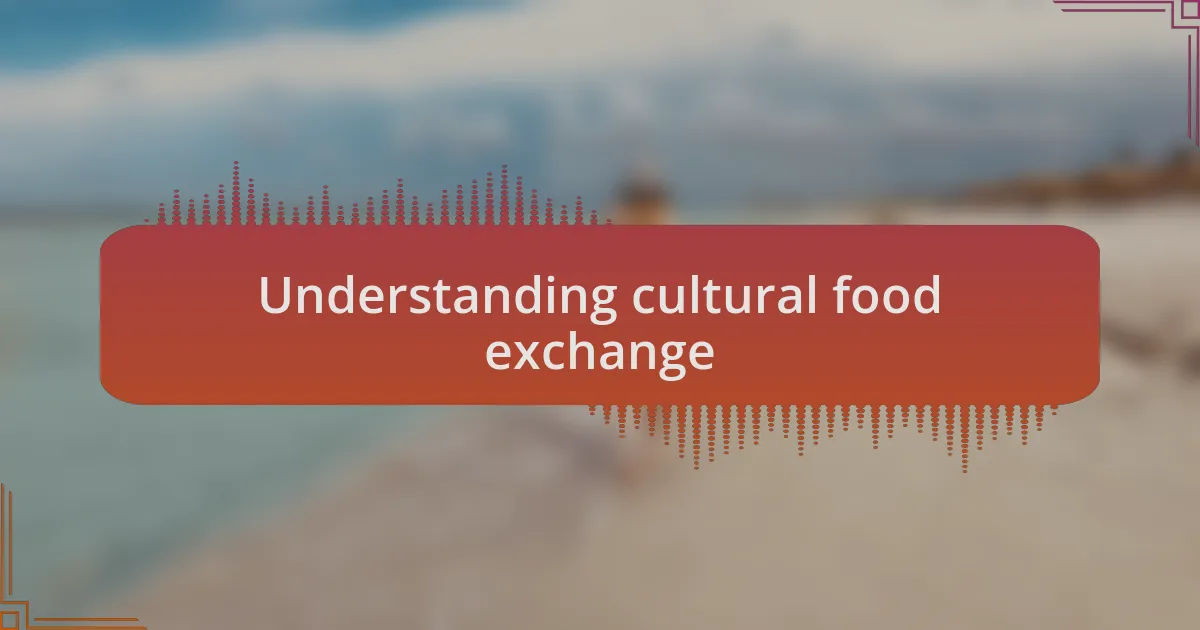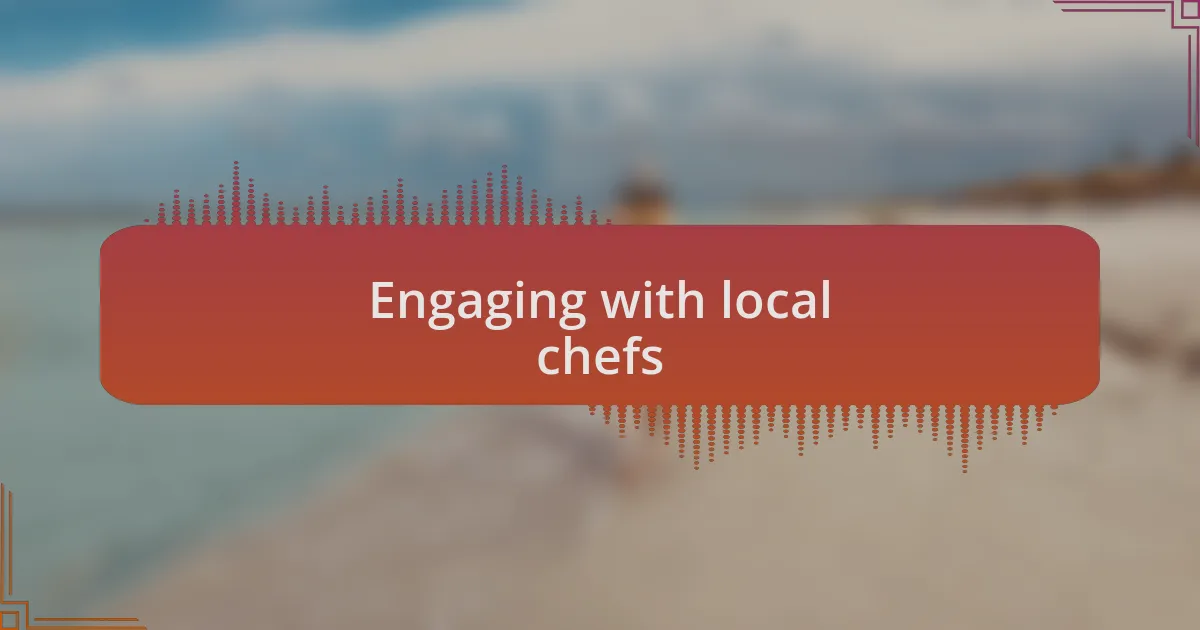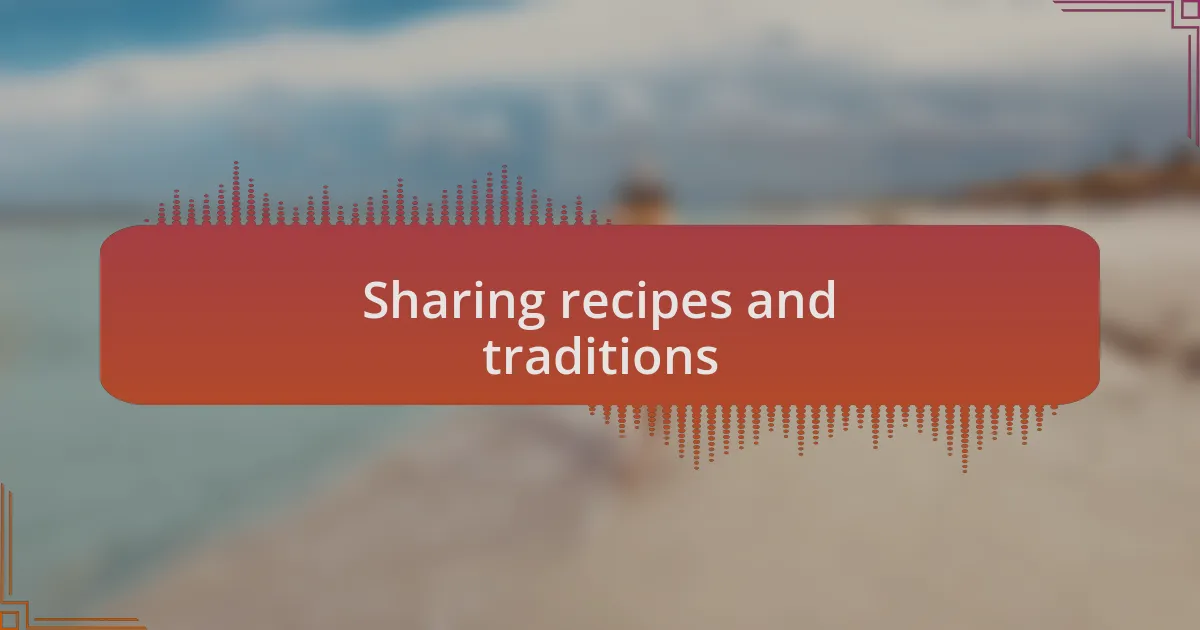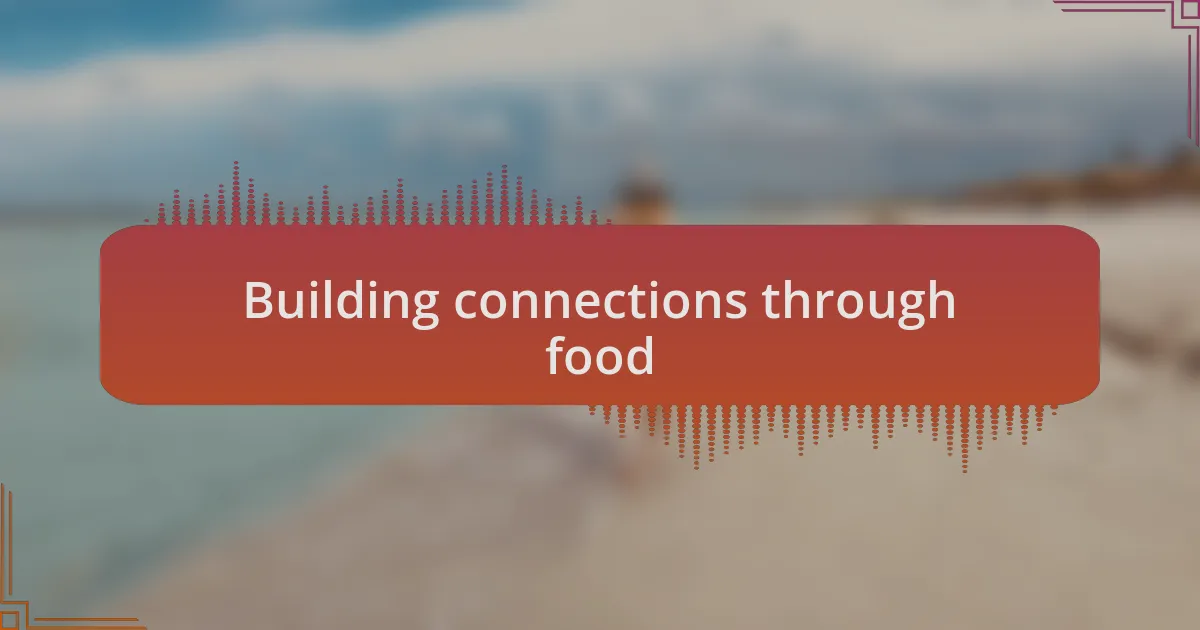Key takeaways:
- Cultural food exchange is a means of connecting diverse backgrounds through shared meals and stories, enriching both palate and perspective.
- Caribbean cuisine exemplifies a blend of influences, using spices to convey cultural narratives and foster community connections.
- Engaging with local chefs offers insights into culinary heritage and creates profound connections through hands-on experiences.
- Sharing recipes and traditions strengthens bonds, revealing personal narratives and the deep ties food has to culture and memories.

Understanding cultural food exchange
Cultural food exchange is a beautiful tapestry of global flavors that transcends boundaries. I remember the first time I tried a dish inspired by Caribbean spices while traveling abroad. It struck me how a simple meal could evoke feelings of home, connecting me with unfamiliar cultures through taste and shared experiences.
When I think of cultural food exchange, I often wonder how a dish can carry the stories of generations. Each ingredient has its own history, weaving together narratives of migration, adaptation, and community. I’ve found that cooking with friends from diverse backgrounds opens up a dialogue about their traditions, which not only enriches my palate but broadens my perspective on the world.
It’s fascinating how food can break barriers and forge connections. During a potluck, I was amazed at the conversations sparked by each dish brought to the table. What were the secret ingredients that made each meal special? Those moments made me realize that cultural food exchange isn’t just about what we eat; it’s about the stories, love, and shared heritage that come along for the ride.

Overview of Caribbean cuisine
Caribbean cuisine is a vibrant fusion of flavors, drawing from indigenous, African, Spanish, and Indian influences, creating a unique culinary identity. I remember tasting my first plate of jerk chicken in Jamaica, where the smoky spice combined with a hint of sweetness took my senses on an unforgettable journey. It’s not just about the food itself; each dish carries the heart and soul of the islands, reflecting the culture and traditions of its people.
One of the standouts in Caribbean cooking is the use of spices. From allspice to scotch bonnet peppers, these ingredients create layers of flavor that transform simple meals into something extraordinary. I often think back to a family gathering where a simple bowl of rice and beans became a feast through the careful balance of seasoning. Have you ever experienced how a handful of spices can define a whole dish? For me, it’s more than just taste; it speaks to the way different cultures bring their heritage to the table.
Sharing a meal in the Caribbean is an experience rich with connection. I recall a community event where locals prepared a variety of dishes, each representing their personal stories. It made me realize that every bite is a slice of someone’s life. Isn’t it incredible how food can forge camaraderie among strangers? The stories behind these dishes are a reminder that, while we may come from diverse backgrounds, the love for food unites us all.

Engaging with local chefs
Engaging with local chefs opens a door to authentic culinary experiences that go beyond typical tourist fare. I remember one evening in a seaside village when I was invited into Chef Marisol’s kitchen. She was preparing a traditional conch fritter recipe, and as she guided me through each step, I experienced firsthand the passion that transforms individual ingredients into a beloved local dish.
Through this hands-on interaction, I realized that local chefs often serve as cultural ambassadors. They share stories of the region’s history, ingredients, and cooking techniques that have been passed down through generations. Can you imagine the richness of understanding gained when you learn how to cook alongside someone who knows the secrets of their culinary heritage? It’s a profound way to connect with the community and the land.
Every time I engage with a local chef, I’m reminded how these encounters can reshape our understanding of food. Recently, I learned about the significance of plantains in Caribbean diets while cooking with a friendly chef named Javier. His enthusiasm was contagious as he explained how this versatile ingredient symbolizes resilience and adaptability in the local cuisine. It struck me that each chop and stir was not merely about making a meal; it was about celebrating a culture that has thrived through challenges. Who knew that cooking could forge such deep connections?

Sharing recipes and traditions
Sharing recipes and traditions is like opening a treasure chest filled with the flavors and stories of a culture. I recall a lively afternoon spent at a block party where the scent of jerk chicken wafted through the air. A local grandmother, Miss Jewel, invited me to join her as she demonstrated her family’s secret marinade. With every ingredient she added, she spoke of the history behind it—the way spices have danced across the Caribbean, influenced by different cultures over centuries. It struck me how recipes are not just about food; they’re whispers of history passed down, connecting generations.
In another instance, I gathered with friends at a community cookout where everyone was encouraged to bring their favorite dish. I chose to make a colorful salad inspired by a chef I’d met. As we all tasted one another’s creations, conversations flowed like the rum punch in our cups. People eagerly shared their own stories related to the dishes, revealing ties to family gatherings and celebrations. It made me ponder: how often do we link food to the heartbeats of our lives? It’s through these shared meals that I truly felt the tapestry of Caribbean life woven through personal narratives.
Reflecting on these moments, I understand that sharing recipes goes beyond exchanging ingredients; it’s about sharing love, memories, and culture. When I took my first bite of a beloved family recipe, I could see the joy in my friend’s eyes. Imagine the bonds we can forge over something as simple as a plate of food! Every dish becomes a story waiting to be told, a connection waiting to be made.

Building connections through food
Building connections through food is truly an art form. I remember a sunset beach gathering, where each dish symbolized a different Caribbean island. As we tasted one another’s offerings, I found myself sharing tales of my travels, how certain meals transported me to sun-soaked shores. Have you ever felt that click with someone when discussing a dish? It’s astounding how food can act as a bridge, fostering friendships that might not have formed otherwise.
During one memorable dinner party, we decided to host an international potluck. Each guest brought a dish that held significance to their cultural background. As I savored a spicy curry brought by a friend, I asked about the story behind it. What unfolds is a beautiful exchange of life experiences and cultural pride, reinforcing my belief that food is a universal language. It’s through these moments of sharing that we not only taste but understand each other on a deeper level.
I often find that the simplest meals evoke the strongest connections. One rainy evening, a neighbor knocked with a steaming bowl of soup, saying it was a family recipe meant to warm the soul. Sitting together, we shared laughter and stories from our pasts, and I realized how this small act forged a lasting bond. Isn’t it fascinating how a single meal can turn strangers into friends? Food has this exceptional power to create communal spaces where laughter, love, and storytelling intertwine.